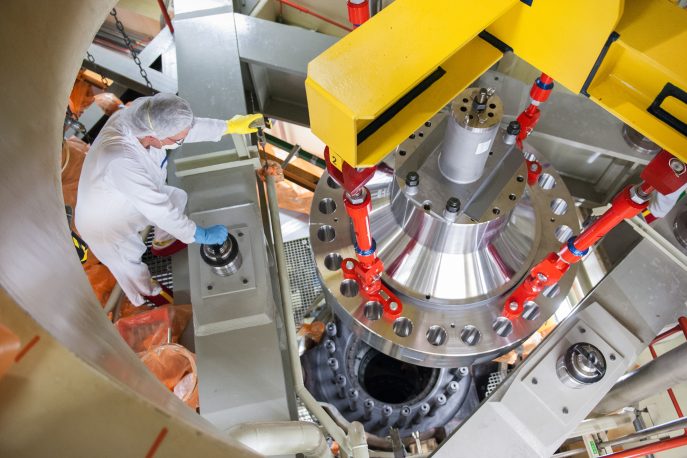Series of articles on barriers 5/6: The water circuit (primary circuit part 2 of 2)
With its pipelines, shut-off valves and other components, the cooling circuit, together with the reactor pressure vessel, is the second barrier for trapping radioactive substances.

In the reactor pressure vessel, water flows through the fuel assemblies. The water cools the fuel assemblies during operation and transports the energy (as heat) out of the reactor to the steam generator (PWR) or to the steam turbines (BWR). This water is radioactive.
The water circuit is not the same for pressurised water and boiling water reactors. In Switzerland there are three pressurised water reactors (Beznau nuclear power plants I and II as well as the Gösgen nuclear power plant) and two boiling water reactors (Mühleberg and Leibstadt nuclear power plants).
Pressurised water reactors
A pressurised water reactor has two water circuits. In the primary circuit, the water is heated under high pressure without boiling. The heated water is conducted to steam generators where it transfers its heat to the secondary circuit before it is pumped back into the reactor core via the primary coolant pumps. The radioactivity remains in the reactor building.
Boiling water reactors
A boiling water reactor only contains one water circuit. The water is brought to the boil directly in the pressure vessel. The generated steam is conducted through pipes to turbines, which drive generators that generate electricity.
In contrast to the pressurised water reactor, the radioactive circulating water also flows through turbines and other parts outside the reactor building.
This is the fifth of six articles on the topic of barriers for trapping radioactive substances. The first describes the barrier principle, while articles 2 to 6 describe the various barriers.

